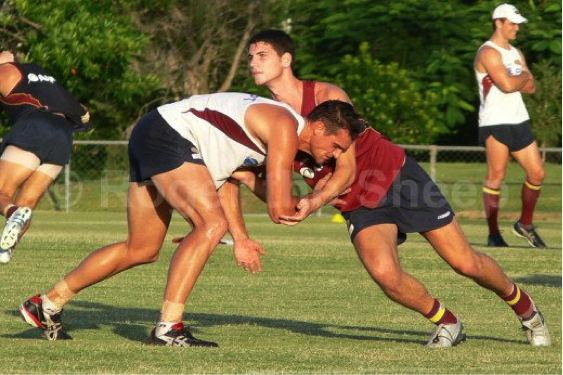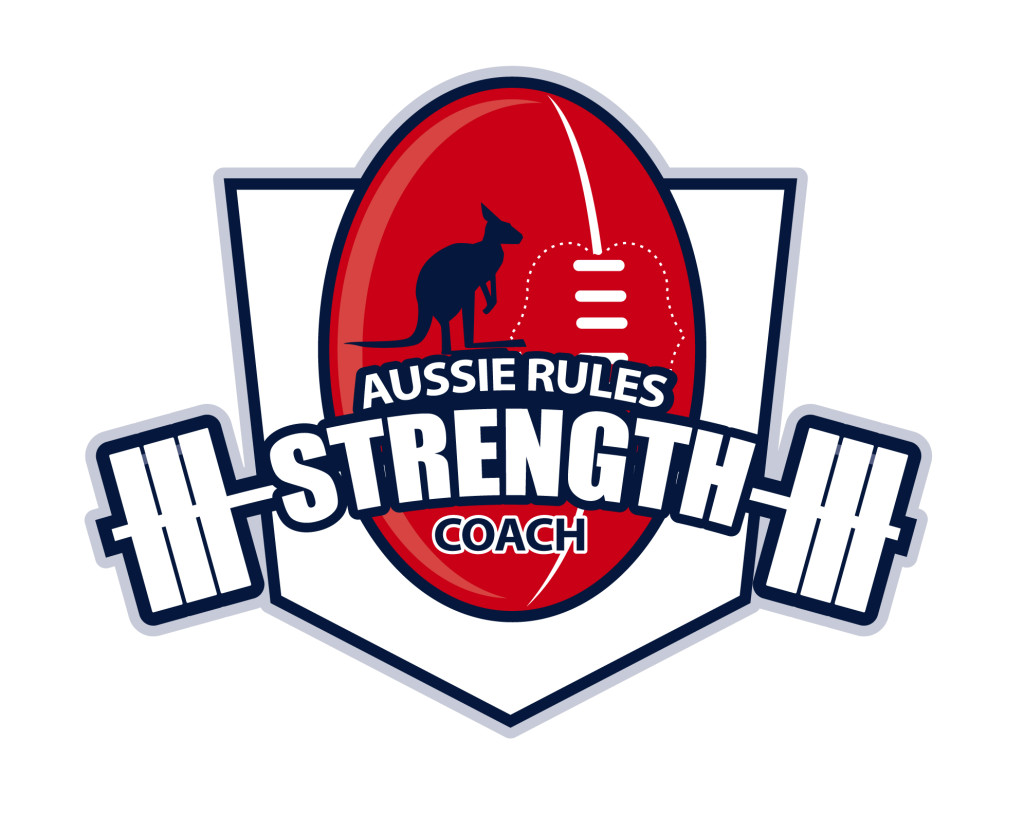Simple & effective match preparation with a friend or small group
Down at the footy club just down the road from my place, I have started to notice smaller groups (4-6) of players starting to congregate together and do a bit of informal training – largely goal kicking, with a little kick to kick too.
This got me thinking back to the discussion of training partners and training groups, and how to structure them in time away from the footy club. This was indeed a discussion topic already – and indeed appears in Agility, Speed and Conditioning for Aussie Rules – well before any of our current restrictions or situations came into place.
Naturally, not everyone has the same luxuries in regards to public gatherings etc – with restrictions being far less severe in some states, however for those who can, this training partners/groups methods can really be put to use to supplement and improve the individual work that many players are doing.
The 3 primary benefits of the partner/group training are;
1.Enjoyment/motivation
2.The level of effort you will exert compared to if you were on your own
3.The more closely related to actual football much of the training can get
Here are 3 simple examples;
Existing training – just with others
Ok pretty boring start, but this is the baseline – whatever the running-based training that you have been doing in your own time is – performing it (or various combinations of it) – with 1-5 team mates or friends will ensure that these are all of a sudden a higher quality – as well as the rest times being stuck to rather than ‘giving myself another 30 seconds.’
-MAS Grids
-Repeat 150’s
-6 minute runs
-Sprint practice – flying 40’s
Pairing basic skills work, with the running work
The most basic of skills work is just the drilling of kick to kick – be that stationary, or with some running up to the kick too. This provides a very good exercise to add in to the rest times between tempo runs for example.
Run a ½ lap – point post to point post – not flat out, but not far short of it (220-240 meters depending on the ground – and complete in 35-40 seconds.) Then in the 1.5-2 minutes rest, focus on the drilling of your kicks (this should not feel like extra running in between – focus entirely on the skill component under that slight element of fatigue – so mostly stationary.)
When the 1.5 – 2 minutes is up, complete another ½ lap tempo run, and once again, drill the kicks at the other end. (Of course you will need 2 footballs for this set up, or 4 of you, with each couple alternating ends each time.)
Then complete this for 4-6 tempo runs, and move on. Such a format can be adapted to other areas, but the above set up is a good one in targeting that hamstring tissue robustness (in other words – build it up gradually – jumping straight into 6 repetitions of this combination if you are untrained is a recipe for niggles or worse.) it doesn’t look like much, but it build quickly combining the 2.
Pairing body contact with Running
OK OK OK….doing this at the moment may not be the best idea – and may actually be the best possible way to get a fine. But lets just have the hypothetical discussion – since the return to football is going to involve a fair bit of body contact anyway.
So yes - it goes without saying that there is more to footy than simply running. Combining grappling work with your running is as good as it gets from a ‘functional’ (carry-over-to-game-day-specificity) conditioning point of view. This is a great option that is at your disposal if you do some of your extra training with a mate or 2. This does not mean performing full tackling, but merely low impact, yet physically tiring work, such as basic grappling.
"The physical demands of rugby can be separated into 2 categories – running work and static exertion work such as tackling, rucking and grappling. Work capacity training for rugby should involve drills that stimulate the contact demands of the game interspersed with short, intense running intervals."
Paul Pook
Strength & Conditioning
Rugby Union
Of course we are talking about footy, but the similarities are obvious in terms of the demands for both running work and static exertion such as tackling. So whilst the specifics of what we will do will be different, the theory behind it, and the method of combining body contact with running intervals is a very good one – and bloody hard.
What we are doing here is simply abbreviating certain running drills, to incorporate some basic grappling with a partner. This grappling or wrestling is literally just that – token wrestling (grabbing by guernsey, pushing, pulling, shoving or trying to tackle each other to the ground – yet maintaining contact for the full duration.)

There are any one of a number of ways in which this could be done and combined with the running, to make them even harder, and stimulate something that is even closer to physical demands in matches. But below are a couple examples.
With those ½ lap tempo runs
Prior to each one of your ½ lap tempo’s, set a timer for 10-20 seconds, in which you grapple and wrestle, and once this timer is finished – you set straight off on your ½ lap run, followed by the rest, before the next repeat.
You could do the 10-20 seconds of grappling after the run.
Or if you really build up, and are able to do it, do it both before and after.
These distance lengths do become a little long for this type of activity however, and the shorter distances work better with this type of work (in regards to keeping the intensity up).
With Shuttle runs
Just as with the tempo runs above, you can combine the grappling with the shuttle style exercises.
Here is an example;
-10 seconds of genuine wresting and grappling
-Followed by 10 seconds to sprint up to a market and get back (say 35-40 meters away.)
-With the final 40 seconds of that as rest time before the next repetition starts.
-Beginning with 5 repetitions, and looking to progress the difficulty.
Of course the 10 seconds is just an example – the run could be a slightly longer distance, or sticking to 10 and 10, reducing the rest time in between. Having someone there to time it would be ideal, unless you can set up a timer with a buzzer.
By the time you are doing 10-20 seconds of pushing, pulling and grappling both before and after an intense shuttle exercise, you are doing an exercise that has a very high level of carryover to the sort of physical demands that you will face in a game of footy (importantly adding in the acceleration, deceleration and changes in direction).
The grappling and running discussion was an abbreviated section taken from Agility, Speed & conditioning for Aussie Rules Footy.
If you would like more detailed and personalised direction, checkout our personalised online programming, or if you would prefer even more personalised and detailed in-person coaching (for those lucky enough to live in the beautiful city of Adelaide), check out our Athletic Development Coaching and Junior Athletic Development Coaching.

Strength Coach

